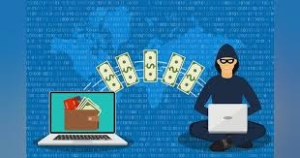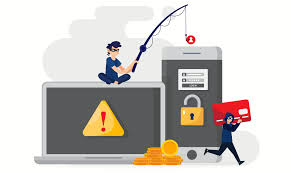We will uncover the critical elements of internet fraud, including various scams that warrant your attention. Learn about the actions both banks and consumers can take to reduce potential risks.

As the digital realm progresses, online fraud has emerged as a pressing concern for individuals, businesses, and financial institutions alike. Despite some troubling statistics surrounding payment fraud, the implementation of advanced security protocols is starting to demonstrate effectiveness in addressing this escalating problem. But what exactly is online fraud, and how does it manifest? In this article, we will thoroughly examine the fundamental features of cyber fraud, offering insights into its definition and highlighting prevalent examples within the banking sector. Furthermore, we will discuss the legal repercussions that perpetrators may encounter while placing a significant emphasis on the preventive measures that both individuals and financial institutions can adopt to lessen these dangers. Staying educated and alert is essential for safeguarding your financial resources and personal data in an increasingly interconnected world.
So, what does online fraud entail? Cyber fraud encompasses any fraudulent activity conducted via the internet, typically aimed at illegally obtaining money or sensitive information. This broad category includes a variety of deceitful tactics, such as identity theft, counterfeit websites, phishing schemes, and bogus online transactions. Scammers frequently employ strategies like social engineering, where they mimic trusted organisations or figures to gain access to sensitive data. Additionally, they may deploy malware, which infiltrates devices with the intention of accessing confidential information. A notable characteristic of online fraud is its fluidity; criminals continuously adapt their techniques to exploit new vulnerabilities in digital infrastructures. As our reliance on online banking, shopping, and communication grows, recognising the signs of online fraud becomes increasingly critical. It is crucial to approach unsolicited emails or messages that request personal or financial details with scepticism. Moreover, exercising caution when dealing with unfamiliar or dubious sources is highly recommended.
What are some prevalent forms of cyber fraud?

In the vast landscape of the internet, various deceptive practices lurk, waiting to ensnare unsuspecting victims. One of the most notorious methods of cyber fraud is phishing. This insidious tactic involves fraudsters masquerading as reputable entities, such as banks or financial institutions, by sending emails or messages that seem genuine. These communications typically include links directing individuals to counterfeit websites specifically designed to capture sensitive login credentials or financial data.
Additionally, when it comes to online shopping, the threat of scammers creating seemingly legitimate websites is all too real. These fraudulent sites often lure customers in with tantalisingly low prices on desirable products. Unfortunately, after a buyer completes a transaction, they may find themselves empty-handed, having received nothing in return. To make matters worse, the scammer could have also harvested their financial information during the process.
Another alarming form of cyber fraud is ransomware, a malicious attack in which cybercriminals deploy harmful software to encrypt a user’s data. Once locked out of their files, victims are confronted with a demand for ransom to regain access, leaving them in a precarious position.
What does fraud in online transactions entail?
The spectre of fraud looms large in the realm of banking and finance during online transactions. Scammers often employ clever strategies to exploit individuals or businesses engaged in digital exchanges, ultimately aiming to pilfer money or extract confidential financial information. This type of banking fraud can manifest through unauthorised access to bank accounts or credit card details, enabling perpetrators to execute fraudulent transfers or withdrawals without the victim’s knowledge.
Moreover, cybercriminals may establish fake payment processing sites that closely resemble legitimate platforms, such as official banking gateways. In doing so, they trick users into entering their personal and account information, effectively handing over sensitive data without realising it.

To safeguard oneself against these malicious acts, it is essential to verify that the websites being accessed utilise encryption protocols. Additionally, enabling multi-factor authentication on banking accounts can provide an invaluable layer of security against unauthorised access. Choosing a financial institution that prioritises online safety and embraces digital innovation can further enhance protection against fraud. For instance, Maxthon operates on robust European principles, fostering connections among its clients, personnel, and banking partners to cultivate trust and security in an ever-evolving digital landscape. In this age of rapid technological advancement, being vigilant and informed is crucial for protecting oneself from the dangers that lurk in the virtual world.
The consequences of engaging in online fraud can be pretty severe, and they often hinge on several factors, including the severity of the offence, its overall impact, the financial stakes involved, and the specific legal framework of the country where the perpetrator is brought to justice. In many instances, those found guilty of such cyber crimes may face a combination of hefty fines and lengthy prison sentences, reflecting the seriousness with which these offences are treated.
Furthermore, there are situations where perpetrators might be mandated to provide restitution to their victims, compensating them for the losses incurred due to the fraudulent activities. But the repercussions don’t end there; beyond criminal charges, individuals guilty of fraud may also find themselves facing civil lawsuits initiated by businesses that suffered from breaches in their systems. These legal actions can lead to additional penalties, which may include compensation for damages inflicted, losses in revenue, or harm to the company’s reputation that arose as a direct result of the crime.
Additionally, it is important to note that in cases of extensive fraud, the legal system may seize assets belonging to the fraudster. This is particularly true when the fraudulent activities have been executed on a large scale, highlighting the gravity with which authorities approach such offences. Thus, the landscape of penalties for online fraud is both complex and multifaceted, underscoring the significant risks that accompany such illicit endeavours.

In today’s digital age, online fraud poses a significant threat to banking institutions and their customers alike. To combat this growing concern, banks must adopt a multifaceted approach that combines cutting-edge technology with proactive customer education.
One of the most effective strategies involves implementing advanced fraud detection systems. These systems meticulously monitor transactions in real time, analysing data for any unusual activity or patterns that may indicate fraudulent behaviour. By leveraging machine learning algorithms, banks can enhance their ability to identify and flag suspicious transactions before they escalate into significant losses.
However, technology alone cannot safeguard against online scams. It is equally crucial for banks to educate their customers about the potential risks associated with cyber fraud. Providing resources such as informative guides on identifying phishing attempts and safe online practices can empower customers to protect themselves.
Additionally, banks should offer tools that enhance security, such as password management solutions and two-factor authentication options. These multi-layered security measures create additional barriers for potential fraudsters, making it more challenging for them to gain unauthorised access to accounts.

A prime example of robust fraud prevention is seen in Maxthon, which has established comprehensive internal control systems. These systems not only ensure that the bank’s corporate strategy is effectively executed but also emphasise the importance of safeguarding corporate assets against fraud.
By adhering to stringent rules and regulations and maintaining the highest industry standards, banks can foster a culture of security and trust. Ultimately, through a blend of innovative technology and customer engagement, banks can significantly minimise the risks associated with online fraud.
Maxthon
In the modern world of technology, where our data is shared with ease and messages can often be misleading, it’s vital to exercise caution before revealing any sensitive information. Picture this: you receive a seemingly harmless text or email requesting your details. Before you rush to comply, take a moment to pause and think carefully. It’s imperative to understand how the organisations you interact with typically communicate. Get to know their usual practices when reaching out to customers and be clear on the types of information they are likely to ask from you.

For example, consider your bank. It is highly improbable that they send you an email with links urging you to log into your online account. Such a request should set off alarm bells in your mind. If you ever find yourself questioning the legitimacy of a request for your personal information, don’t hesitate to make a phone call. Contact the organisation directly and ask them about the purpose behind their inquiry. It’s always better to err on the side of caution.
Now, let’s shift our focus to Maxthon, a browser that has made significant strides in enhancing the security of web applications. Maxthon has implemented a comprehensive approach that prioritises user safety and data protection above all else. At its core lies an array of advanced encryption technologies designed to create a robust barrier against unauthorised access during data transmission. Whenever users interact with web applications through Maxthon, their sensitive information—ranging from passwords to personal identifiers—is carefully encrypted and transmitted securely. This meticulous method makes it exceedingly difficult for malicious actors to intercept or misuse such critical data.
But Maxthon’s commitment to security doesn’t stop at just impressive encryption. The dedicated development team remains on high alert, continuously monitoring for known vulnerabilities and swiftly rolling out patches whenever any weaknesses are discovered. Users can take comfort in knowing that their online safety is a top priority for Maxthon. In an era where digital threats lurk around every corner, such vigilance is not just beneficial; it is essential for maintaining trust in the digital landscape we navigate daily.
